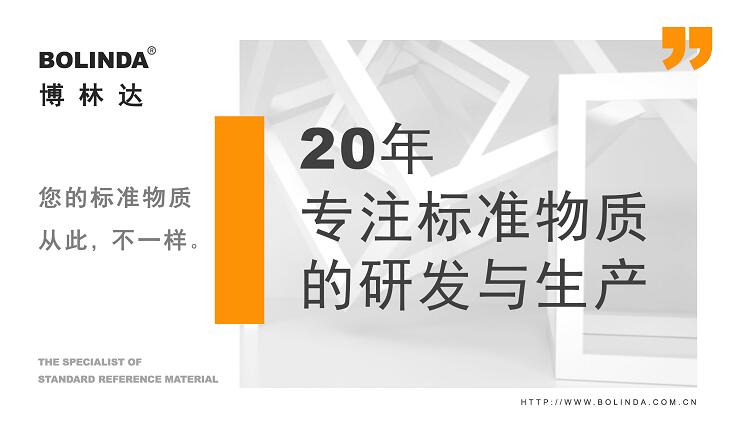2020-02-24 17:09:44
A standard substance is a substance or material that has been determined to have one or more sufficiently uniform characteristic values, As a "measuring tool" in the analysis and measurement industry, it plays an indispensable role in calibrating measuring instruments and devices, evaluating measurement and analysis methods, measuring the characteristic values of substances or materials, assessing the operational technical level of analysts, and controlling the quality of products in the production process. Below, Bolinda will introduce the necessary conditions for reference materials.
Essential conditions for reference materials:
1. Uniform material
The factors that affect the uniformity of a substance include its physical properties, such as density and particle size, as well as the chemical form and structural status of its components. Different densities may cause gravitational segregation. Generally speaking, the finer the solid particles, the more likely they are to undergo gravitational segregation. In addition, when the particles are too fine, the specific surface area increases, the surface activity also increases, and the chances of moisture absorption and pollution also increase.
2. Stable quantity value
The factors that affect the stability of reference materials can include physical factors such as light, temperature, and humidity, as well as chemical factors such as dissolution, decomposition, and synthesis, as well as biological factors such as bacterial action.
Stability should be manifested in: solid substances are not weathered, decomposed, or oxidized; Liquid substances do not produce precipitation or mold; Gases and liquid substances do not corrode or adsorb the inner walls of containers.

3. Accurate determination of quantity value
Reference materials must be measured in a qualified laboratory by qualified and experienced operators using accurate and reliable measurement methods. When using a certain measurement method to measure the fixed value of a reference material, the recognized value is the best estimate of the value of the identified characteristic quantity, and the deviation between the recognized value and the true value does not exceed the uncertainty of the fixed value measurement.
4. Attached with specific certificates
Certified reference materials must carry a specific "certificate", which is the main technical document introducing the characteristics of the reference material and a quality assurance certificate provided by the reference material developer (producer) to the user. The certificate must indicate the certified (standard) value of the reference material, the uncertainty of the certified value, the correct use method, and relevant precautions for transportation and storage.
5. Capable of mass production
Reference materials must have sufficient batches and reserves to meet the actual needs of measurement work for reference materials. Especially the second level (i.e. working level) standard materials, which are directly used for on-site analysis and measurement, have a high demand. For metal, rock, ore and other standard materials with relatively stable performance, it is best to prepare a batch of them in a quantity that can meet the usage requirements for on-site analysis and measurement for 5 to 10 years.
6. Having similar composition and characteristics to the tested substance
To eliminate the systemic impact caused by the differences in matrix material and measurement range between the reference material and the substance to be tested, the developer should choose a substance with similar properties and composition to the substance to be tested as a candidate for the reference material. When preparing reference materials, producers consciously choose certain materials or artificially synthesize them to simulate the matrix of plants in biochemical and environmental analysis.
The above content is an introduction to the conditions of reference materials, which artificially synthesize glass containing trace elements as the matrix of mineral components; Simulating seawater, river water, and acid rain as the matrix of water quality reference materials is all done to eliminate the impact of matrix differences when using reference materials for measurement.





